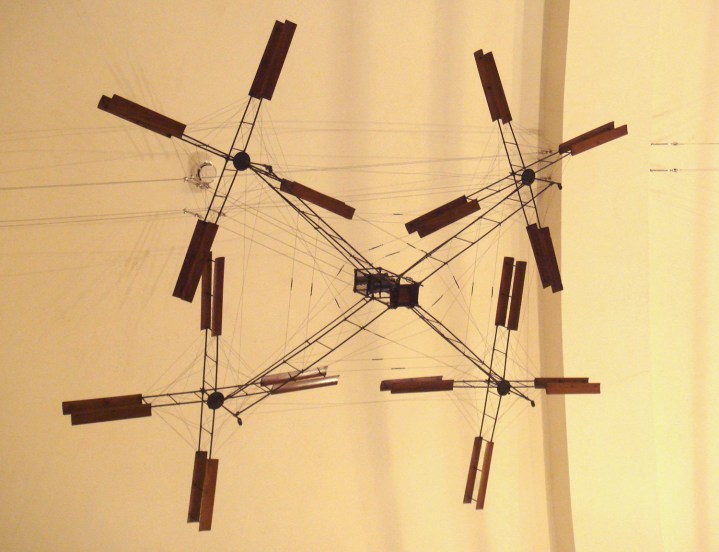Here in 2018, drones are flying high — both figuratively and literally. Whether it’s military applications or product deliveries, these are 10 of the most significant milestones that explain how unmanned aerial vehicles (UAVs) became the ultra-hot product category that they are today.
The earliest breakthroughs

1907: The world’s first quadcopter was created by inventor brothers Jacques and Louis Bréguet, working with controversial Nobel Prize winner Professor Charles Richet. While undoubtedly exciting, it had some big limitations: being unsteerable, requiring four men to steady it, and — in its first flight — lifting just two feet off the ground. But it did innovate the quadcopter form factor we have today. Hey, every journey has to start somewhere!
The first military drones

1917: Launched only 16 years after the Wright Brothers’ pioneering Kitty Hawk flight, the Ruston Proctor Aerial Target became the first pilotless winged aircraft in history. It was a radio-controlled pilotless airplane, based on RC technology from the inventor Nikola Tesla. The goal of the Aerial Target was for it to act as a flying bomb, which could be piloted into enemies. Despite promising demonstrations, the AT was ultimately never used in a combat scenario. However, it opened the door for similar projects, such as the astonishing Kettering Bug — and paved the way for today’s military drones.
1943: Created for use by the German military during World War II, “Fritz X” was the nickname given to the FX-1400, the first remote-controlled weapon that was actually put into operational use. A 2,300 pound bomb that was used to sink ships during combat, this was not only the first military drone to be properly deployed, but also the ancestor of modern anti-ship missiles and other precision-guided weapons.
The RC plane boom
1960s: Breakthroughs in transistor technology meant that, for the first time, miniaturized radio-controlled components were available to customers at a reasonable cost. What followed was a popularity boom in RC planes in the U.S. Mostly coming in kit form, these RC planes offered everything from indoor-flyable models to much larger outdoor models. The cottage industry that sprang up was an early example of the kind of community and market which emerged for consumer drones half a century later.
The first armed drone strikes

2001: In the aftermath of 9/11, the CIA began flying armed drones over Afghanistan as part of the war against the Taliban. The first CIA drone-based kill operation took place in February 2002, when an unmanned Predator drone was used to target a suspect thought to be Osama bin Laden. However, it turned out to be an innocent man named Daraz Khan who was out collecting scrap metal. Instances such as this began concerns about the use of drones in warfare, which continues to rage today.
FAA creates commercial drone permits

2006: Recognizing the potential of non-military, non-consumer drone applications, the FAA issued the first commercial drone permits. These permits lifted some of the limitations placed on consumer drones flown for recreational purposes. In doing so, it opened up new possibilities for companies or professionals who wanted to use drones in assorted business ventures. At first, barely any commercial drone permits are requested. However, that number soon ramped up.
Here comes the Parrot AR Drone

2010: The French company Parrot released their Parrot AR Drone, the first ready-to-fly drone which can be controlled entirely via Wi-Fi, using a smartphone. The drone was almost immediately successful, both critically and commercially, receiving the 2010 CES Innovations award for Electronic Gaming Hardware, and selling upwards of half a million units. The company’s AR Drone 2.0 further improved on the formula with an easier piloting system, making it easier for newcomers to pick-up-and-play.
Amazon Prime Air
2013: In December 2013, Amazon released a concept video showcasing founder Jeff Bezos’ dream for a drone-based delivery system. While the retail giant wasn’t the first company to consider drone deliveries, it was the one which puts the technology into the public consciousness. In an interview on 60 Minutes, Bezos described the possibility of using the technology to make half-hour deliveries. “I know this looks like science fiction. It’s not,” he said. Bezos described the technology as being around five years away, although Amazon later clarified that aerial deliveries will require some federal rule changes.
The Lily drone debacle

2015: The consumer drone industry has gone from strength to strength. However, not everything has been good. Perhaps the biggest disappointment — and one which still leaves a bitter taste in some people’s mouths — was the Lily Camera drone disaster. Despite racking up $34 million in pre-orders, the original company behind this smart flying camera wound up filing for bankruptcy and shutting down after a series of delays. It was a tough lesson for a lot of drone enthusiasts to learn.
Drones get smarter

2016: Already one of the best drone makers on the marketplace, DJI’s Phantom 4 introduced smart computer vision and machine learning technology. This allowed it to avoid obstacles and intelligently track (and photograph) people, animals, or objects — rather than being limited to following a GPS signal. The resulting UAV was a major milestone for drone photography and consumer drones in general.
Editors' Recommendations
- The most influential women in tech history
- Taco Bell’s Xbox Game Pass-style pass will put a taco in your belly daily for $10 a month
- Here’s what a trend-analyzing A.I. thinks will be the next big thing in tech
- The best FPV drone videos of all time
- Check out the 90-mph racing drones that broadcast NASCAR’s Daytona 500


